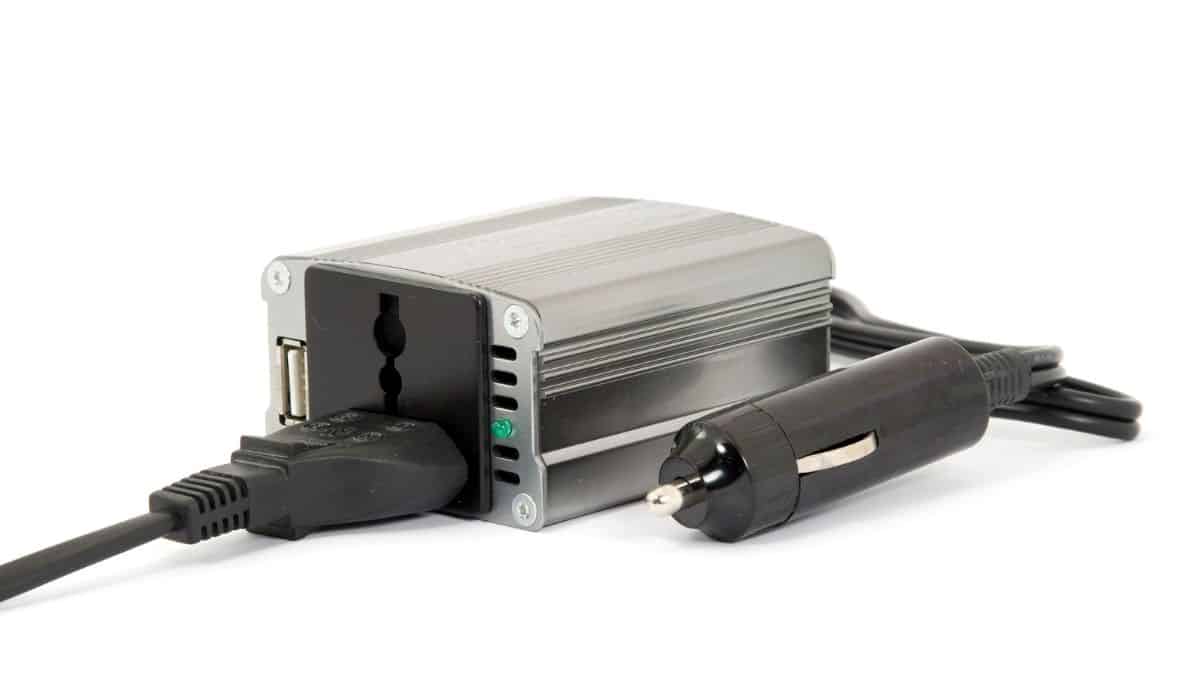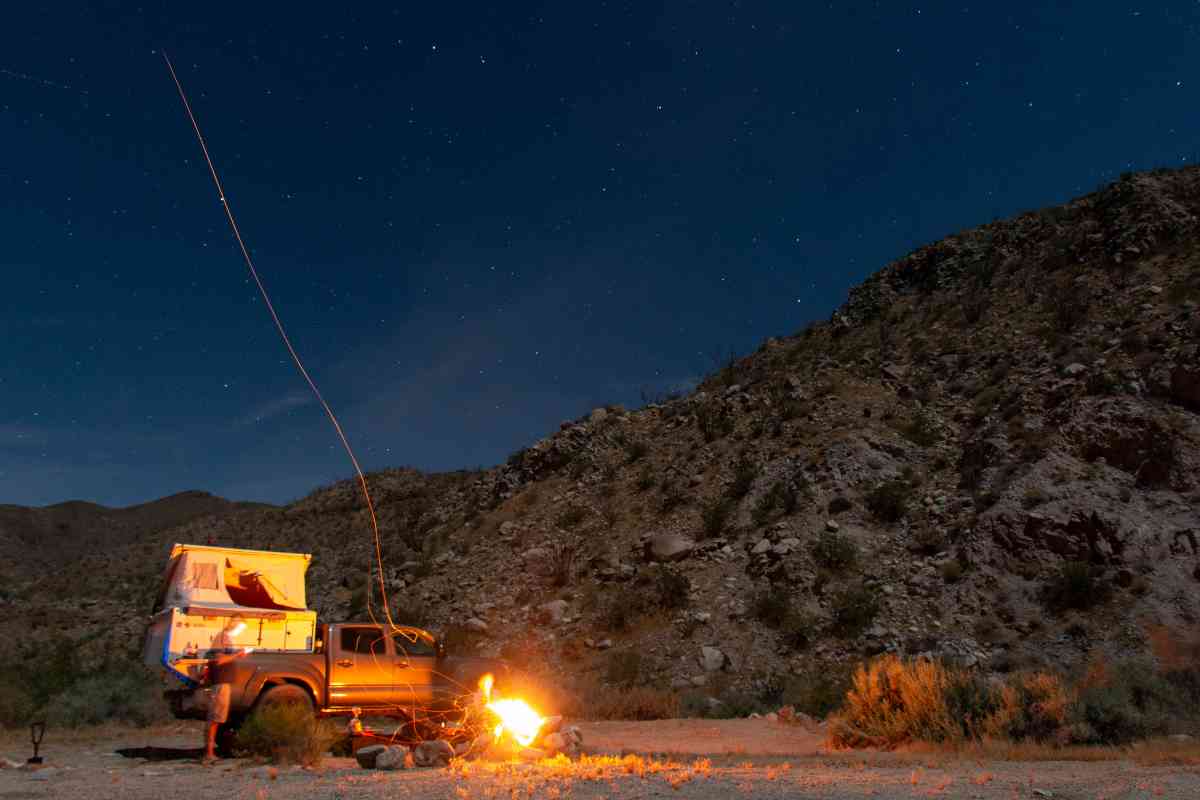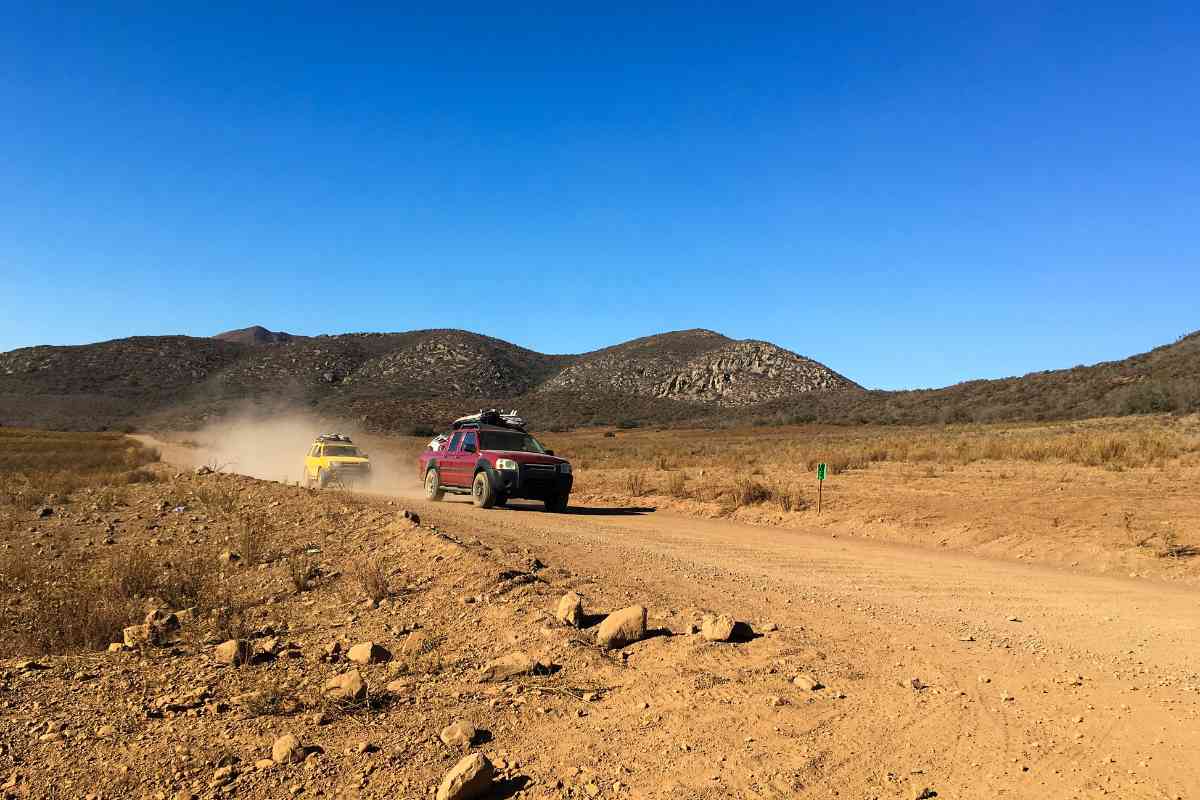Your Guide To Choosing A Power Inverter For Overlanding
Powering your Overlanding rig is essential to a successful trip through the backcountry. So, how do you select a power inverter that suits your rig and setup?

What Size Power Inverter Do I Need for My Overlander?
Generally, it’s good to have a minimum of 120 Volts of power in an Overland setup. Be sure to factor in the number of devices you plan to run, available storage space, your battery, and compatibility. Some good power inverter brands include Krieger, Ampeak, Giandrel, and Energizer.
Don’t be intimidated if you’re looking for a power inverter that fits your Overland rig. There’s a lot to consider, and we cover everything you need to know in the article below. Read on for more information.
Key Takeaways:
- Consider the number of devices you plan to power and their wattage requirements when choosing the size of the power inverter.
- Calculate the battery size for the power inverter using the formula B = P × t / Vdc, considering the inverter’s power rating, duration of power supply, and DC voltage.
- It’s recommended to use only 50% of a battery’s discharge capacity to maximize battery life and avoid complete discharge.
- When estimating power requirements, consider factors such as lighting, electronics, and climate control devices.
- Several top power inverter models for Overlanding include Krieger, Ampeak, Giandel, and Energizer.
Choosing The Right Inverter For Overlanding
When determining the right size power inverter for your Overlander, there are a few key factors to consider. By keeping these considerations in mind, you can select an inverter that suits your power needs efficiently. Here’s what you need to know:
Determine Power Requirements:
- Take stock of the devices you plan to run in your Overlander. This could include cell phones, laptops, appliances, or other electronic equipment.
- Consider the number of devices you’ll need to power simultaneously.
Size and Configuration:
- Power inverters are available in various shapes, sizes, and configurations.
- If you require power for multiple devices, consider a multi-port power bank or a simple inverter with sufficient outlets.
Power Capacity:
- Power inverters come with different wattage capacities, typically ranging from 300 to 3,000 watts.
- Keep in mind that higher power capacity inverters tend to be more expensive, larger, and heavier.a
- Choose an inverter that meets your power requirements without going overboard.
Voltage Compatibility:
- Ensure that the power inverter you select matches the voltage of your Overlander’s battery.
- For instance, if you have a 24-volt battery, choose an inverter specifically designed to convert 24-volt power.
Portability and Storage:
- As an Overlander, portability and storage space are crucial factors to consider.
- Look for a power inverter that fits well within your setup and can be easily stored.
- Some models feature removable battery packs, providing the flexibility to take power with you wherever you go.
- Make sure the inverter is lightweight enough to transport comfortably during your adventures.
By evaluating your power requirements, considering the size and power capacity of the inverter, ensuring voltage compatibility, and prioritizing portability, you can select the perfect power inverter for your Overlander setup.

How to Calculate What Size Power Inverter You Need
Calculating the size of the power inverter you need for your Overlanding setup involves considering various factors. Here’s a step-by-step guide to help you determine the appropriate size:
Determine Total Wattage:
- Make a list of all the devices you plan to power simultaneously, including the largest ones.
- Identify the wattage rating for each device (usually mentioned on the device or in the user manual).
- Add up the wattage of all the devices to get the total wattage.
Add a Safety Margin:
- To ensure the inverter can handle peak power demands and to account for unforeseen circumstances, add a safety margin of 20% to the total wattage.
- Multiply the total wattage by 1.2 (or add 20% of the total wattage) to get the adjusted wattage.
Select an Inverter Size:
- Look for an inverter that has a capacity equal to or slightly higher than the adjusted wattage.
- Round up to the nearest available inverter size if needed.
Additional Considerations:
Lighting:
- Consider the power requirements for lighting options such as spotlights, LEDs, or lamps.
- Smaller rigs may require lower wattage lights, while larger rigs may need more powerful lighting options.
Electronics:
- Take into account the power needs of essential electronics like laptops, refrigerators, cellphones, and internet connections.
- Factor in power surges and opt for inverters with built-in surge protectors or use external surge protectors to safeguard your devices.
Climate Control:
- If your setup includes devices for climate control like fans or heaters, ensure the power inverter can support their power requirements.
- While avoiding running fans or heaters overnight to conserve battery, consider the wattage needed for small fans or electric heaters.
By considering the total wattage, adding a safety margin, and accounting for lighting, electronics, and climate control devices, you can accurately determine the size of the power inverter that suits your Overlanding needs.

How to Calculate Inverter Battery Size
Calculating the battery size for a power inverter is straightforward using the formula B = P × t / Vdc. Here’s a step-by-step guide to help you determine the battery size:
- B: Battery Capacity
- B represents the required battery capacity measured in amp-hours (Ah).
- This value indicates the amount of current the battery can deliver over a specific period.
- P: Inverter Power Rating
- P refers to the power rating of the inverter measured in watts (W).
- This value represents the maximum power the inverter can deliver.
- t: Duration of Power Supply
- t denotes the desired duration of the power supply measured in hours (h).
- It indicates how long you intend to run the inverter.
- Vdc: DC Voltage of the Power Inverter
- Vdc represents the DC voltage of the power inverter.
- This value indicates the operating voltage of the inverter, such as 12V or 24V.
Using these variables, the formula B = P × t / Vdc can be applied to calculate the battery size required for the inverter.
For example, let’s say you have a 2,000-watt inverter, and you want to determine how long a deep cycle battery can run it. Assuming a 12-volt system, you could use a 200-amp 12-volt battery. Although it’s not recommended to fully discharge the battery, for demonstration purposes, we’ll consider using 100% and 50% of the battery’s capacity.
At 100% battery usage, the runtime would be approximately 1.2 hours (B = 2,000 × 1 / 12).
At 50% battery usage, the runtime would be slightly over half an hour (B = 2,000 × 1 / 12 / 2).
Keep in mind that these calculations are estimates, and it’s essential to avoid fully discharging the battery for optimal battery life and performance.
When determining the power inverter size, consider the wattage requirements of the devices you plan to run. Add up the wattage of each device to obtain a minimum figure. It’s recommended to add an additional 10 to 20% as a safety margin and to account for any additional power consumption.
By considering the specific wattage requirements of your devices and factoring in a safety margin, you can select an appropriate power inverter size for your needs.
What are the Best Power Inverters for Overlanding?

When it comes to power inverters for Overlanding, several top models stand out for their performance and features. Let’s take a closer look at some of the best options:
Krieger Power Inverter:
Last update on 2025-12-18 / If you click this affiliate link and make a purchase, we earn a commission at no additional cost to you.
- Krieger offers a range of power inverters and pure sine wave inverters that excel in performance.
- Models are available with power capacities ranging from 1,100 to 4,000 Watts.
- Compact form factors, typically between 11 and 15 inches in height.
- Features such as 2-4 AC outlets and USB slots for charging multiple devices simultaneously.
- Additional features may include a wired remote control, ANL inline fuse kit, and LCD screen for easy monitoring.
- METLAB tested and approved with a three-year warranty on parts and labor.
Ampeak Power Inverters:
Last update on 2025-12-18 / If you click this affiliate link and make a purchase, we earn a commission at no additional cost to you.
- Ampeak is known for its smaller inverters that are highly regarded.
- Popular models, such as the Ampeak 2000 Watt Power Inverter, offer 2,000 Watts of continuous power and 4,000 Watts of peak power.
- Comes with a wired remote controller, convenient for easy control.
- Features include multiple AC outlets, USB charging slots, digital display, cooling fan, and alarms.
- Durable ABS housing provides protection against wear and tear.
- ETL certified with an 18-month warranty and lifetime customer support.
Giandel Power Inverters:
Last update on 2025-12-18 / If you click this affiliate link and make a purchase, we earn a commission at no additional cost to you.
- Giandel offers efficient and affordable power inverters suitable for Overlanding.
- Models are designed for both peak and continuous power needs.
- Heavy-duty aluminum housing ensures faster cooling of internal wiring and enhanced protection.
- Features include dual AC outlets, USB ports, and an ON/OFF Remote Control.
- Provides full safety features such as over-voltage, overload, over-current, under-voltage, overheating, and short circuit protection.
- Comes with a 15-foot cable length and an 18-month warranty.
Energizer Power Inverters:
Last update on 2025-12-18 / If you click this affiliate link and make a purchase, we earn a commission at no additional cost to you.
- Energizer, known for batteries, also produces excellent power inverters.
- Compact and lightweight models with power capacities of 2,000 Watts of continuous power and 4,000 Watts of peak power.
- Features include sine wave power inversion, USB ports, AC outlets, and safety protections against overload, over-voltage, under-voltage, high temperature, and short circuit.
- Easy-to-read LCD provides essential information such as input voltage, output wattage, and battery gauge.
- Suitable for powering various devices, including cellphones, laptops, refrigerators, microwaves, and heaters.
- Energizer power inverters come with a two-year warranty.
These power inverters offer a range of options to suit different power requirements and budgets for your Overlanding adventures. Consider the power capacity, features, and warranty when selecting the best power inverter for your specific needs.
Wrapping Up
Selecting the right power inverter is essential to ensure your Overlanding rig operates at full capacity without going overboard. In addition, it’s important to consider the size of your rig, battery setup, and the number of devices you plan to use.
Some of the best brands to consider include Energizer, Giandel, Ampeak, and Krieger. In addition, be sure to look for safety features to prevent wear and tear during unexpected events outdoors.




